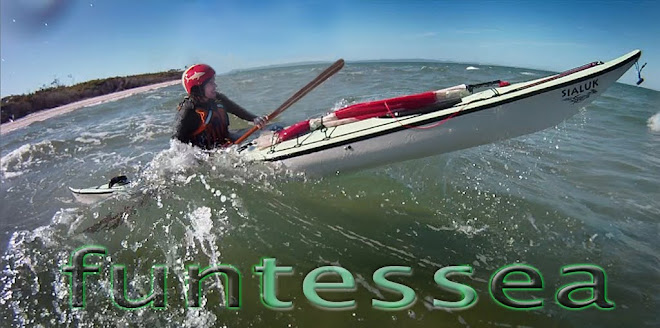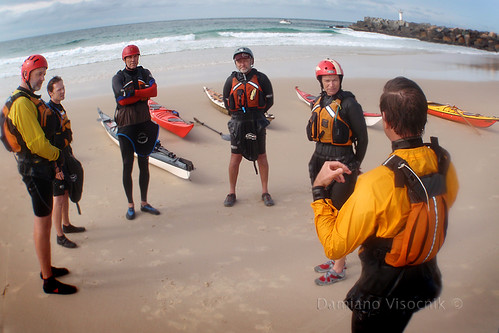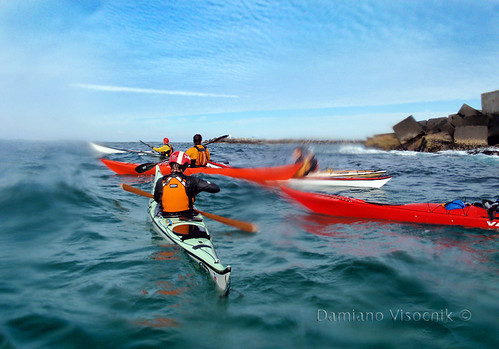
Great White Dorsal Fin_Image http://www.sticca.info/
Acknowledgement: I would like to thank Valerie Taylor AM (Member of the Order of Australia), multi award winning underwater action photographer, film maker, marine conservationist and shark authority for sharing some of her knowledge gained from 50+ years spent underwater with her husband Ron Taylor AM (Member of the Order of Australia).
Valerie, thank you.

Valerie Taylor AM with black tipped reef sharks_used with permission
I grew up on an island with a coastline that stretches almost 50,000km linked by over 10,000 beaches. My island home has the Great Barrier Reef on its doorstep and a marine environment which is home to species found nowhere else in the world. My island home is Australia.
Growing up surrounded by oceans and enjoying her bounty, you might expect I would be knowledgeable of the marine life, including sharks. While most Australians live within 50km of the coast, not all venture regularly into the water or have any real understanding of its inhabitants. Like most Australians, the foundations of my knowledge of sharks or in this case ignorance of them, was gleaned from the trusted newspaper, nightly news bulletin and movies. Between JAWS and Vic Hislop, I was totally brainwashed into being fearful of the ‘killing machines’ waiting to hunt me and eat me alive the moment I stepped into the ocean.
Thank goodness internationally renowned conservationists and underwater film makers Jacques Cousteau and Ron & Valerie Taylor were also on screen in Australia in the 70’s to offer us a factual perspective.

Diving with Tiger Shark_Valerie Taylor AM, Ron Taylor AM, Stan Waterman _Image g-na
As sea kayaking takes place in the marine environment it is interesting to note from recent conversations and forum entries that while we may have lost some of the paralysing fear associated with sharks, ignorance still abounds. We laymen don’t know how to identify them by sight or behaviour. Aside from being advised to avoid the sunup/sundown feeding times and churned up water at river mouths where an inquisitive bite could prove detrimental; there is little factual information available about shark behaviour around kayaks (in Qld anyway). For example, a recent touch up between a kayaker and a shark in Moreton Bay was immediately presumed to be by a Great White, even though no one saw the shark. It piqued my interest as my limited understanding was that Qld was not the preferred environment for Great White sharks. Surely there are other species of sharks more commonly found in Moreton Bay which may have tasted the hull?

Tiger Shark 'stripes' Image_g-na
Preferring facts to sensational speculation, I sought to find out more from acknowledged authorities. Fortunately, multi award winning underwater action photographer, film maker, marine conservationist and shark authority Valerie Taylor AM offered the following insights*. Ms Taylor advises that her expertise comes from her background as a diver, not a sea kayaker although you cannot argue that her phenomenal knowledge of sharks is undisputed:
Dear Tess,
Some female Great Whites go north to pup probably so their daddies do not eat the new born. They have been tracked swimming up the coast then swimming back. One was seen in the early 70s off Heron Island and photographed by an American called Stan Waterman. It was small, 2 meters. Smaller G Ws eat only fish. A big one has been seen by Peter Piggot (Uncle Pete's Toy stores) from a helicopter in Morton Bay. It was probably a female. They could follow the whales up the coast but there are many other sharks that hang around whales when they give birth mainly to eat the after birth. Not even a GW would take on a female whale protecting her young.
There are far fewer sharks off our coast than when I was young. In the 60s 70s we saw them constantly while diving and snorkelling. Now we rarely see them at all unless we go to a no take zone or protected area, then it is mainly the harmless Grey Nurse or Wobby.
If we see a shark in the wild while diving we consider ourselves lucky. If you see one while paddling enjoy the experience.
Regards Valerie Taylor AM

Great White_Image g-na
Since taking up sea kayaking, I have had close encounters with Humpback whales, dugong, dolphins, rays, sea snakes and turtles but seldom sharks. The handful of encounters with sharks has included an evening paddle where I was briefly accompanied by a dorsal fin; a Tiger shark surfacing to investigate in the passage between Moreton and Stradbroke Islands; I’ve been aggressively ‘bumped’ from below and followed by what I believe was a large shark, although it did not break the surface. My experiences are not unique as many sea kayakers would have similar experiences.
Tom Nicholson of Elver Paddles recounted this recent experience*, while he was paddling his hand made, skin on frame Greenland kayak off the northern NSW coast. Tom raises interesting questions about identifying shark species from dorsal fins, something I’ve wondered myself.
“On Saturday a cranking southerly was blowing. Perfect for a run from my place to Woolgoolga, 15km up the coast.I headed out in my F1 though dauntingly big surf, 3/4 expecting to be pounded back onto the beach. But my little boat really surprised me and we made it out the back. Guessing some solid 5 foot swell coming through. Once out there I headed north. I barely needed to paddle, other than to make sure I caught the swell when it was breaking behind me, and a bit of steering, as my little sail just cranked - plenty of speed bubble noises, and planing down swells.. at speed the F1 feels like it 'pops up' and planes.Half way there off Sandy Beach (yup it really is called that.. creative buggers round here..) I saw a large D shaped dorsal fin. Ragged trailing edge, sharky slow movement and a _large_ shadow, that seemed about the same proportions as my boat. No tail fin out of the water. Not great visibility of the body because of the wind chop.It was not a whale, and it wasn't a dolphin. ... clearly, it was a biggish shark. And it was turning across my bow, heading round.It certainly gave me some impetus to paddle!! Irrational cause 4 or 5 kts isn't going to out run a shark, but I felt much better paddling a bit away from it.Anyway the paddle was great, saw a whale, a pod of dolphins, some albatros and skewas (sp) and had a mighty nice time out there. Woolgoolga was beautifully sheltered, with offshore wind, and little waves for landing.But I can't ID the shark.From a bit of googling it looks like a great white fin shape, but does anyone know of a dorsal fin shark id method? I'm imagining a nifty poster (What shark is that?) Any help appreciated.”
TomN
www.elverpaddles.com
First published on SeaKayakForum Sun 25 June 2010

Tiger Shark_Image Willy Volk
There has been speculation on whether certain attributes of a sea kayak might attract a shark’s interest over others; hull colour; rudder acting as a lure; solo kayak or the straggler in a group of paddlers. Ms Taylor kindly responded to these and Tom’s questions below.
Dear Tess,
Interesting observations. Few sharks swim on the surface normally but some of the larger species will swim to the surface to investigate the unusual. Hammerheads (the smaller species) often swim on the surface with their dorsals out. They seem to like the sun. Sunfish or Mola Mola often mistaken for sharks do the same and their fin looks like that of a shark. They grow very large but eat jellyfish. They usual swim slowly. Tiger sharks have a curious nature. We have had them come up to check out our dingy and any other thing that they see floating. They have very sweet natures around divers, never aggressive (that’s our experience) but we know when working with them not to swim on the surface and when exiting the water if we have been working with a tiger we get out fast. One guy who does a lot of work with them has had 7 cameras that divers let go for a minute and they floated up taken by tigers. Warning - never swim after your camera, just let it float away if you are filming tigers. They will eat anything they do not understand. It is a test, remember sharks have no hands they feel with their nose or teeth, most of the cameras were later found still floating. The sharks had spat them out.
Great Whites also are very curious. They generally do not have a sweet nature. In the 70s we did a lot of colour tests with Great Whites. Their favourite colours seem to be cream, yellow and orange. In the 1980s we did colour tests for the US navy (they were testing the safest colour for the plastic bags that a downed airman could float in). Dark green like a garbage bag seemed best and I think that is what they use today. The US navy tests were in the tropics. No Great Whites.
Now, about the fins, even we have trouble identifying a shark by its dorsal fin but with a GW there is usually a tail fin at least breaking the surface a little. Tom’s dorsal sounds like a sunfish or perhaps a tiger. A Hammerhead would I think avoid you. They are very hard to approach when on the surface. I think a GW would move fairly fast though we have mostly seen them around baits in a feeding pattern. The few time we have encountered them without baits they were moving much faster than you could swim.
Bull sharks will also investigate the unusual specially something splashing around on the surface like a dying fish. They like the G White also investigate by biting which is why most swimmers on the very rare occasion contact with a Bull is made, are bitten then let go. Bull sharks are fish eaters but a bite in the water can bleed out a human very fast. Most deaths from shark attack are caused by loss of blood.
If I had a kayak I would never have the bottom a hot bright colour. As for white, well a lot of fish, sharks included have white bellies which must make them hard to see from below when looking up towards the sky. If a shark was investigating me in a kayak I would keep still, float like a log not splash around like a dying fish. If contact is made a jab in the gills with your paddle will have the shark showing great respect. No predator expects its intended prey to fight back. They expect it to try and escape.
Hope the above answers some your questions but remember my experience comes from being a diver not a paddler.
Regards Valerie Taylor AM

Bull Sharks_Image AlKok

Hammerhead Shark_Image ClifB

Sunfish or Mola Mola_Image jillmotts

Sunfish fin_Image gripso banana prune
Valerie’s information is interesting and offers a lot to think about. There is still plenty more to be learned. The Moreton Bay ‘touch up’ could have been a Great White but seems more likely to have been a Bull or Tiger shark. Regardless of type of shark, paddling a kayak that gets 'taste tested' would be memorable.
It seems dorsal fin identification may be a long way off yet and given their diminishing population, the chances of seeing a shark during a trip is rare. When Tom’s heart rate returns to normal, he may realise how fortunate he is to have had the experience.
You may have your own facts or close encounter to share, I would be interested to hear from you.
Postscript 4 Aug 2010:
from Valerie Taylor re Duane Strosaker report on Qajaq USA Greenland Kayaking forum 2 Aug 2010:
Dear Tess, Very interesting. The shark behaved as I would have thought it should. One small point I did not make when I wrote. Is if the shark cannot dig its bottom teeth into the intended victim (in this case a fibre glass hull) They will not bring their top teeth down with any force. This is maybe because they do not want to break them off or perhaps the subject is not tender and juicy like a fish or sea lion. I noticed this over 100 times during the mesh suit tests. To get the shark to bite properly I had to have a tuna fillet tied to the outside of the suit (they like tuna best) otherwise they would just give a test bite dislike the feel of the mesh and let go. Unfortunately a test bite from a well armed animal can cut through human flesh and veins very easily, it does not have to be aggressive just curious as the shark in the story you sent me seemed to be.
Regards Valerie

g-na,Stan Waterman, Valerie Taylor AM, Ron Taylor AM Jan 2010
*Used with permission of the author
**Information provided by Valerie Taylor AM relates to questions asked about regions in northern NSW and Queensland Australia.
Postscript:28 October 2010
Eric Soares has published a story titled 'How to Deal with Sharks'.
The story includes shark encounters, tips on dealing with sharks and why it is always a good idea to listen to your kayak instructor.
**Information provided by Valerie Taylor AM relates to questions asked about regions in northern NSW and Queensland Australia.
Postscript:28 October 2010
Eric Soares has published a story titled 'How to Deal with Sharks'.
The story includes shark encounters, tips on dealing with sharks and why it is always a good idea to listen to your kayak instructor.



